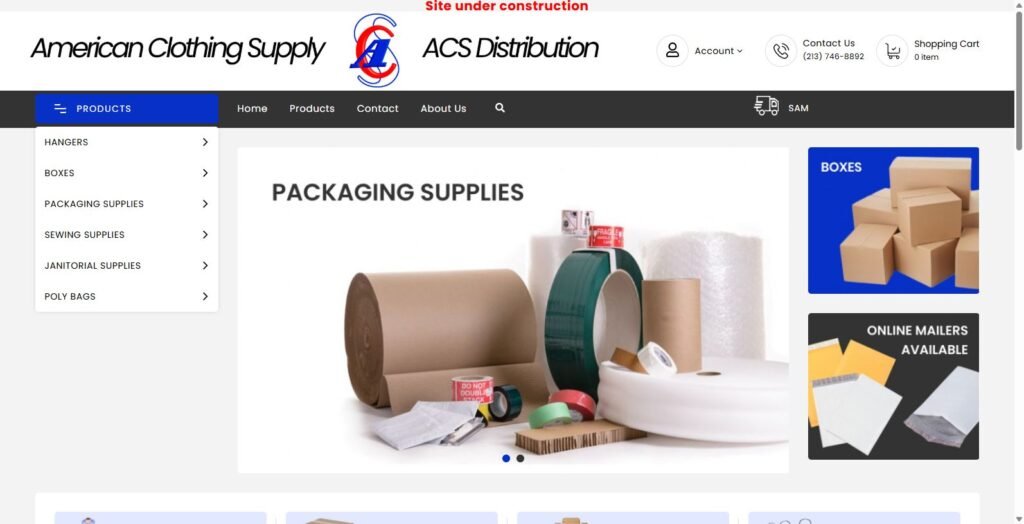Introduction
So , what incisively is terry cloth ? Terry fabriic is a Woven or enfwine fabric wiith tenacious , unmmown loop of garn That apply it a viced , plush graain and amaazing Weewee absorbency . Mst citizenry acknowledge it as thecloth in their favorite bathroom towel or cosy bathrobe .
Its uses go far beyond just the bathroom. This guide will tell you everything you need to know about this popular fabric.
We’ll look at how it’s made, the different types you can find, all the ways it can be used, and how to care for it properly so it stays soft and absorbent for years.
The Anatomy of an Icon: How Is Terry Cloth Made?

The secret to terry cloth’s amazing ability to soak up water comes from how it’s made. Understanding this process helps you see why it works so well and what makes high-quality terry better than the rest.
Traditional terycloth Material is crewte through a Special weaving process that appply two warp irradiation . Tis method create thee framework ‘stouch intertwine .
The Two-Warp Weaving Technique
The magic happens on a specialized loom. Here’s the simple breakdown of how it works:
- The Ground Warp: This first set of threads is pulled tight, making a strong, stable base for the fabric. It’s the foundation that holds everything together.
- The Pile Warp: This second set of threads is kept looser. This looseness is key to forming the loops.
- Weaving and Beating: When the horizontal threads weave through, part of the loom pushes them down. This forces the loose pile warp threads to bunch up and create the loops that make terry cloth special.
This a special weaving process involving two warp beams creates a fabric with loops standing up from the base, which greatly increases the surface area and lets it absorb tons of liquid.
Weaving vs. Knitting
While classic, sturdy terry cloth used for towels is woven, you can also find knitted versions. This type, often called French terry, feels different.
Woven terry is usually more stable and absorbent. Knitted terry stretches more and drapes better over the body.
Terry Cloth Varieties: A Buyer’s Guide to Choosing the Right Type

Not all terry cloth is the same. When shopping, you’ll find different weights, materials, and styles.
Knowing these differences helps you pick the perfect product, whether you want a luxury bath towel or fabric for a project.
Understanding Fabric Weight (GSM)
The most important sign of terry cloth quality is its weight, measured in Grams per Square Meter (GSM). Higher GSM means more loops, more density, and better absorbency.
- Lightweight (300-400 GSM): This terry dries quickly and isn’t heavy. It’s perfect for gym towels, kitchen towels, or beach towels where you don’t want bulky fabric.
- Medium Weight (400-600 GSM): This is ideal for good bath towels. It has a nice balance of softness, absorbency, and reasonable drying time.
- Heavyweight (600-900+ GSM): These are luxury, spa-quality towels. They are very dense, extremely soft, and super absorbent, but they take longer to dry.
Material Matters: Cotton, Bamboo, and Blends
The fiber used to make the loops greatly affects how the final product feels and works. Cotton is standard, but other materials offer unique benefits.
Here’s how they compare:
| Material | Key Characteristics | Best For… |
|---|---|---|
| Standard Cotton | Durable, absorbent, and affordable. The reliable workhorse of terry cloth. | Everyday bath and kitchen towels, cleaning cloths. |
| Egyptian/Pima Cotton | Made from extra-long staple (ELS) fibers, making it exceptionally soft, strong, and highly absorbent. | Luxury bath towels, premium robes, and high-end linens. |
| Bamboo Rayon | Naturally silky-soft, hypoallergenic, and often said to have anti-bacterial properties. It’s also extremely absorbent. | Baby products (hooded towels, bibs), and towels for those with sensitive skin. |
| Cotton/Poly Blends | The addition of polyester increases durability, reduces shrinkage, and helps the fabric dry faster. It can slightly reduce absorbency. | Hospitality industry (hotel towels), gym towels, and high-use commercial environments. |
More Than a Towel: The Surprising Versatility of Terry Cloth

While its main job is drying, terry cloth’s unique mix of softness, durability, and absorbency has made it popular in many other areas of our lives. This fabric perfectly combines function with comfort.
– The Spa Experience at Home: Beyond towels, terry cloth is perfect for plush bathrobes, slippers, and spa headbands. Nothing feels better at absorbing moisture while staying warm and cozy against the skin.
– For the Little Ones: The fabric’s gentle, soft loops work great for sensitive skin, making it ideal for baby bibs, burp cloths, and hooded towels. It soaks up messes well and feels soft on baby skin.
– The Ultimate Cleaning Tool: Terry cloth’s looped pile is excellent at trapping dust and scrubbing away dirt without scratching surfaces. This makes it perfect for reusable cleaning rags, washcloths, and car detailing towels.
– A Fashion Statement: Once popular in the 70s, terry cloth is making a comeback. It has become a summer fashion staple for its retro-cool style. Now it’s popular for its cozy yet stylish warm-weather apparel, showing up in poolside cover-ups, casual shorts, polo shirts, and bucket hats.
Know Your Knits: Terry Cloth vs. French Terry vs. Microfiber
It’s easy to mix up fabrics that look or feel similar. Terry cloth is often compared to French terry and microfiber, but they’re very different in both how they’re made and what they’re used for.
This table shows the differences clearly:
| Feature | Terry Cloth | French Terry | Microfiber |
|---|---|---|---|
| Structure | Woven with loops on both sides. | A knit fabric with loops on one side and a smooth, flat surface on the other. | Ultra-fine synthetic fibers woven into a flat, non-looped fabric. |
| Feel | Plush, thick, and highly textured. Classic towel feel. | Softer, lighter, and drapes much better than standard terry. The inside is soft, the outside is smooth. | Smooth, soft, and sometimes has a slightly “grippy” feel as it catches on skin. |
| Primary Use | Maximum absorbency: bath towels, robes, beachwear, cleaning cloths. | Apparel: sweatshirts, joggers, loungewear, and casual dresses where comfort and drape are key. | High-performance cleaning, athletic towels, and fast-drying travel towels. |
| Absorbency | Very High. The loops are designed to soak up and hold water. | Moderate. It’s absorbent but not designed for drying off after a shower. | High. Excellent at absorbing both water and oils, and dries extremely fast. |
| Material | Typically Cotton, Bamboo, or blends. | Typically Cotton or cotton blends (often with spandex for stretch). | Synthetic (Polyester, Polyamide). |
The Secret to Softness: How to Care for Terry Cloth

The biggest complaint about terry cloth is that it can become stiff and less absorbent over time. The good news is that this is almost always preventable with proper care.
Following a few simple rules will keep your towels and robes feeling soft and absorbent for years.
The Do’s and Don’ts of Washing
DO: Wash terry cloth with similar items and colors in warm, not hot, water. Hot water can damage cotton fibers and make them shrink over time.
DO: Use only a moderate amount of detergent. Using too much is a common mistake that creates buildup, making the fabric feel stiff and waxy.
DON’T: Use liquid fabric softener. This is the worst enemy of absorbency. Fabric softener covers fibers with a waxy, water-repellent film, which defeats the purpose of a towel.
Restoring Softness and Fluff
If your towels already feel stiff, don’t worry—they can be saved. The best trick to restore stiff towels uses simple household products to remove buildup.
Tip 1: The Vinegar Rinse. Add one cup of white vinegar to your washer’s rinse cycle (with no detergent). The vinegar helps dissolve the mineral and detergent buildup that causes stiffness.
Tip 2: The Baking Soda Wash. For another wash, add half a cup of baking soda with your regular detergent. Baking soda helps clean the fibers, brighten them, and remove odors.
Drying and Dealing with Snags
DO: Tumble dry on medium heat. The tumbling helps fluff up the loops and keep them soft. Shake items well before putting them in the dryer.
DON’T: Over-dry your terry items. Too much heat can damage the cotton fibers, making them brittle and rough.
DON’T PULL SNAGS! Eventually, a loop will get caught on something. Pulling it will only create a long, unraveled run in the fabric. Instead, simply use scissors to snip the snagged loop so it’s even with the rest of the fabric. Because terry cloth is woven, cutting one loop won’t cause the whole item to unravel. Following these proper care tips for terry cloth fabric will greatly extend its life.
Conclusion: The Enduring Appeal of Terry Cloth
From its clever, looped design to its many modern uses, terry cloth is much more than a simple fabric. It’s a textile made for performance, offering unmatched absorbency, lasting comfort, and amazing versatility.
Whether you’re drying off, cleaning up, or making a fashion statement, this seemingly basic fabric remains an essential and beloved material in homes and wardrobes worldwide.
FAQ
- What exactly is terry cloth and how is it made?
Terry cloth is a woven or knitted fabric with looped threads that create absorbency. It’s traditionally made using a two-warp weaving technique that forms loops standing up from a stable base fabric. - What is GSM in terry cloth and why does it matter?
GSM (Grams per Square Meter) measures terry cloth density and quality. Lightweight (300-400 GSM) dries quickly, medium (400-600 GSM) balances absorbency and drying time, while heavyweight (600-900+ GSM) offers luxury spa-quality performance. - What are the different types of materials used for terry cloth?
Terry cloth comes in standard cotton, premium Egyptian/Pima cotton, eco-friendly bamboo rayon, and cotton/poly blends, each offering different benefits for absorbency, softness, and durability. - How is terry cloth different from French terry and microfiber?
Terry cloth has loops on both sides and maximum absorbency, while French terry has loops on one side only and is mainly for clothing. Microfiber is synthetic with no loops but offers high performance and quick-drying properties. - What’s the best way to care for terry cloth to maintain softness?
Wash terry cloth in warm water with moderate detergent, avoid fabric softeners, use vinegar or baking soda to restore stiffness, and tumble dry on medium heat without overdrying to maintain absorbency and softness.








